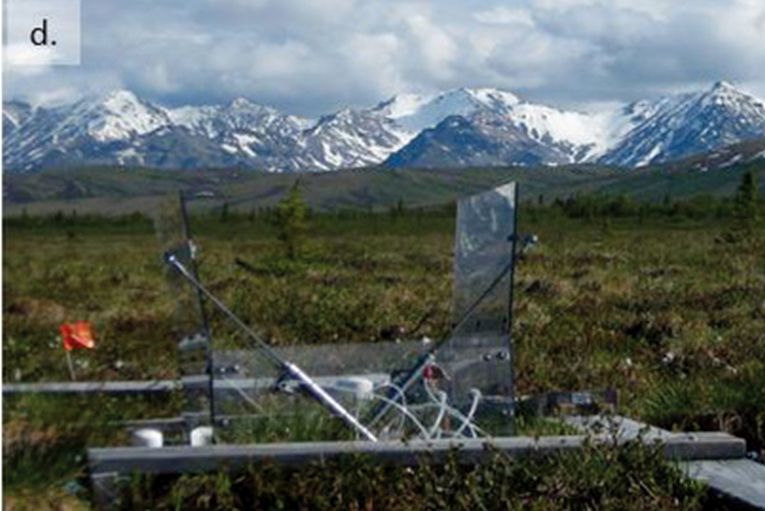It seems highly likely that the Arctic as we know it will disappear soon. By the end of this young century, a 30-70% decline in temperatures will ensure that permafrost, for example will disappear from gigantic areas of our North. Microbial decomposition of the preserved material in this soil will proceed at a comparable rate.
While the Arctic ecosystems above ground will be subject to dramatic change, this release of tonnes of carbon dioxide will have the most prominent effect. Nutrients will be released too, having been stored for thousands of years, so plant growth will be electric, with increases in annual biomass production and productivity. For 10-20 years, the tundra has already changed as far as plant growth is concerned. The taiga forests are creeping further north too.
It is this increase in warming resulting from the global warming that is most significant, however. Experiments with warmed permafrost areas have so far been lacking, but now the true situation can be calculated. The Arctic's permafrost carbon pool is twice that of the global atmospheric pool, just to put this in context. With the CiPEHR project on heating the permafrost in Alaska, we now have 3 years of studying the degraded permafrost, without delaying spring snow melt. The whole-ecosystem warming was studied, as well as the annual ecosystem carbon dioxide exchange.
The studies were performed by Susan M. Natali, Edward A. G. Schuur,Elizabeth E. Webb, Caitlin E. Hicks Pries and Kathryn G. Crummer of Woods Hole Research Center, Massachusetts, and the University of Florida - in ESA Ecology, as "Permafrost degradation stimulates carbon loss from experimentally warmed tundra".
The moist acidic tundra was well-drained glacial till and loess, facing north-east, with the first 60cm above the permafrost active in warmer weather. The dominant sedge, Eriophorum vaginatum in the area forms tussocks, alongside the shrubby and delicious bog bilberry, Vaccinium uliginosum, and several moss species. The warming technique employed was to use snow fences to trap an insulating layer of snow. And, in the summer, to use polycarbonate, open-top chambers (OTC) to protect the enclosed area.
The collection of results gets ever more complex. Infrared gas analyzers were used in 8 plots at a time, totalling 48 in the growing season. When the winter warming produced 2-3 degrees Celsius improvement in soil temperature, wetter soils were found in the summer. The summer warming produced only 1 degree of extra heat for the air but not the soil or permafrost. Productivity increased significantly however, as a result of both treatments and the heating effect was found to accumulate massively in effects on productivity over the 3 experimental years, from a first-year 12% effect to 57%. Warming effects also accumulated in line with the plants' response.
The key here was the net C uptake during the growing season, producing all those bigger plants. C loss to respiration also increased during snow-covered periods. This 50% winter loss completely offset the C gain from the growing season. This disappointment was compounded by further (doubling) losses of carbon during autumn and early winter. The outlook is not a good one.
During the recent Holocene period, carbon loss has been evident in the Arctic. Because of this storage, Alaskan sites here were a net carbon source during the time of the experiments. The release of carbon sources is likely to increase, according to this and many other experiments, leaving us with an irreversible problem.
If the likely doubling of C losses does take place, 60-70 grams per square metre per year will be released into the atmosphere, as well as extensive methane sources and other carbon dioxide sources. If even the lowest estimate of 30% of the permafrost is lost this century, we are facing the release of 470 gigatonnes of carbon into our atmosphere, with new plant growth hopefully offsetting that by 50%.Do you really want a further guaranteed 235 gigatonnes to add to the current 850? Now that would be global warming with a vengeance.
NB. The IPCC will be piling on the climate change pressure with their Yokohama announcement on 31st March










